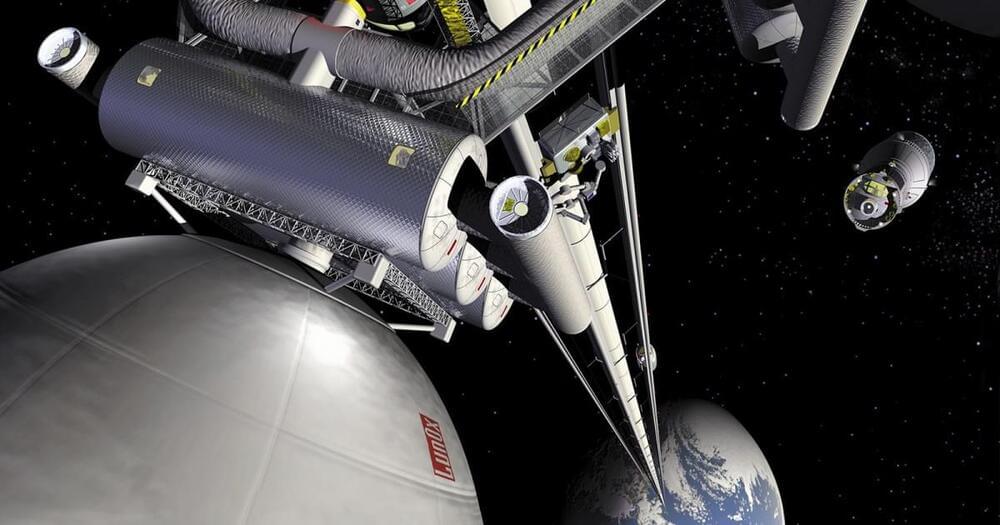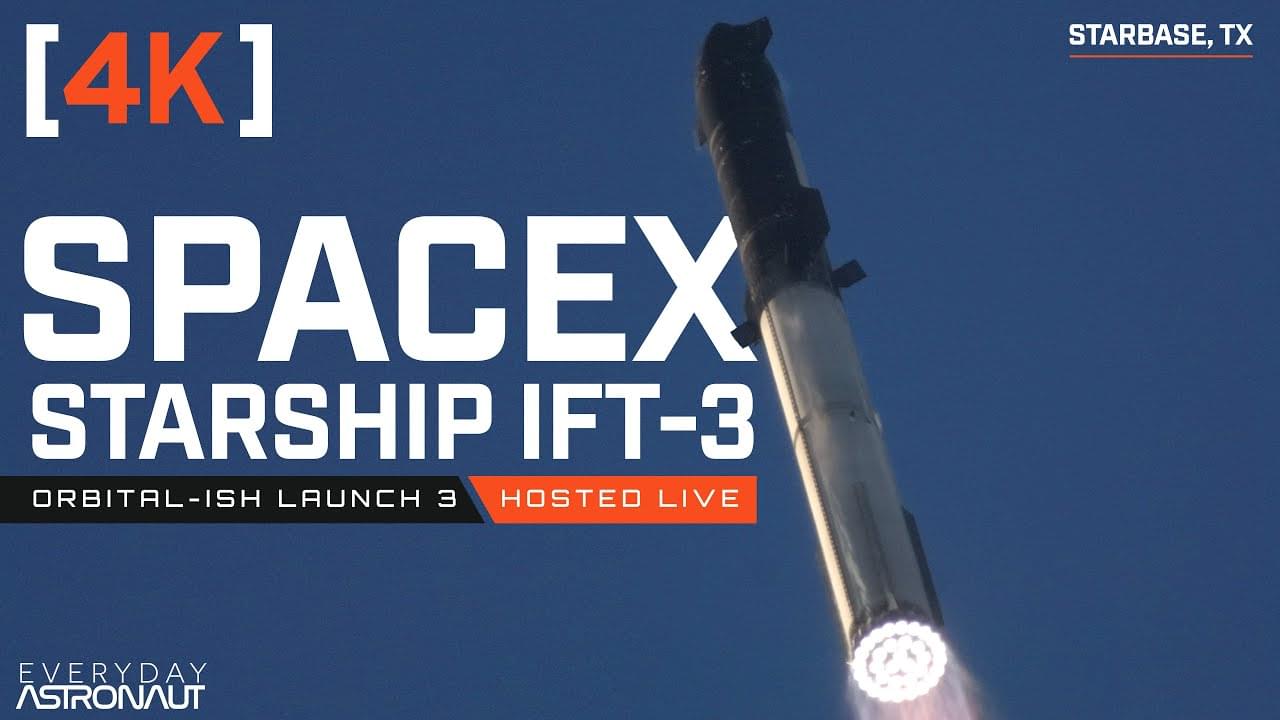Mar 19, 2024
SpaceX Expects Next Starship Launch in About 6 Weeks
Posted by Shailesh Prasad in category: space travel
SpaceX’s president and COO has one priority for the next test-flight: ‘getting reentry right.’
SpaceX’s president and COO has one priority for the next test-flight: ‘getting reentry right.’

Discover why 4,500+ pros recommend Nutrafol. Use code WAI at https://nutrafol.com/ for $10 off your first month!
OUT NOW!!! IFT3 Shirt: https://whataboutit.myspreadshop.com/.…
The third Starship launched! How did it go? Does anything require repairs, and why did it tumble? Dream Chaser is gearing up for the launch, and ABL Space is back in action!
Continue reading “SpaceX Starship IFT3 Aftermath: New Insights Paint Different Picture!” »

https://www.freethink.com/space/space-elevator 📸: VectorMine / Adobe Stock
The researchers are still working on the issue of scaling up production, but in 2021, state-owned news outlet Xinhua released a video depicting an in-development concept, called “Sky Ladder,” that would consist of space elevators above Earth and the moon.
Continue reading “Space elevators are inching closer to reality” »
Astronomers can use supercomputers to simulate the formation of galaxies from the Big Bang 13.8 billion years ago to the present day. But there are a number of sources of error. An international research team, led by researchers in Lund, has spent a hundred million computer hours over eight years trying to correct these.
The last decade has seen major advances in computer simulations that can realistically calculate how galaxies form. These cosmological simulations are crucial to our understanding of where galaxies, stars and planets come from. However, the predictions from such models are affected by limitations in the resolution of the simulations, as well as assumptions about a number of factors, such as how stars live and die and the evolution of the interstellar medium.
To minimise the sources of error and produce more accurate simulations, 160 researchers from 60 higher education institutions – led by Santi Roca-Fàbrega at Lund University, Ji-hoon Kim at Seoul National University and Joel R. Primack at the University of California – have collaborated and now present the results of the largest comparison of simulations done ever.
The first thing many media seem not to understand is the methodology followed by Space X, which is completely different from what the traditional aerospace builders do. While the latter prefer to spend their money on a long project life cycle, including long requirements discussion, and meticulous and detailed test engineering and integration phases, Space X opts for a methodology closer to the experimental scientific method: draw essential requirements, build a prototype, test, fail, learn from failures, build a new improved prototype, and try again. Each reiteration adds quality to the project, up to a point when the prototype is working well, and Falcon 9 (as a sample) becomes the space workhorse with any more competitors in the world. Is that so hard to be understood, for journalists?When a traditional project fails, many billions are wasted, and many years of work are canceled. When a “normal” failure occurs during Space X’s reiterative project development, very less resources are wasted. And, after all, during the expendable rockets’ age, all the rockets were always wasted, at every launch! The difference is incomparable. Another advantage of this method is its high flexibility. If a project lasts 10 years, it is difficult to take advantage of the technological advances: switching to new technology in a project initiated many years ago forces heavy requirements reviews and unavoidable delays. In a fail-and-repeat project, new technologies and new ideas can be adopted more easily and more quickly, as demonstrated by the thousands of changes and improvements applied to the different starships, super-heavy boosters, and raptor engine prototypes throughout history. Despite the misfortune bearers and the envious, the methodology works. The success of Space X in the launchers market doesn’t lie.
Starship 28 and the Super-Heavy Booster 10 made most of the expected work, and even more than what was expected: while the suborbital altitude was planned, the Starship spacecraft reached 230 km, a low Earth orbit altitude at more than 26,200 km/h. several tests were conducted after the engine cutoff, including a propellant transfer demo and payload dispenser test.
Only two operations have failed. The booster couldn’t make it to descend vertically on its engines, since only 3 of them reignited, and splashed in the Mexican Gulf at little more than 1,000 km/h. The Starship failed during the re-entry in the atmosphere, in the Indian Ocean. We could observe many insulating tiles flying away from the Starship’s body during the first part of the re-entry. At an altitude of 65 km, telemetry from Ship 28 was lost, and the vehicle was destroyed before splashing in the sea.

Third time’s the charm (of sorts) for SpaceX’s Starship, which soared over the Gulf of Mexico Thursday morning during its third flight test.
An engineer with the Deep Space Network figured out a way to decode a mysterious “new signal” coming from NASA’s Voyager 1 spacecraft.
SpaceX is continuing to make progress on the development of Starship, the largest rocket ever built, with the third test flight Thursday accomplishing considerably more than the previous two tests.
The 400-foot-tall Starship rocket lifted off from SpaceX’s Starbase facility in southeastern Texas at 8:25 a.m. local time. Although SpaceX has been developing Starship for years, this is only the third time the company has attempted an orbital mission.
After liftoff, Starship proceeded through a nominal — aerospace speak for normal — ascend. All 33 Raptor engines on the Super Heavy booster performed as designed, and the two stages separated around 2 minutes 45 seconds into the mission. Critically, the launch vehicle nailed a novel stage separation technique called “hot staging,” where the upper stage (also called Starship) lights its engines to push away the Super Heavy booster. The hot-staging technique was performed for the first time, ever, during the second Starship test flight last November.

[TIME SUBJECT TO CHANGE] This is the third fully integrated full stack test flight of Starship and the mighty Super Heavy booster, the largest and most powerful rocket to ever fly. It produces over twice as much thrust as the Saturn V that took humans to the moon.
The goal of the test is to get further along than IFT-2 in November, 2023, which didn’t see either the ship or the booster make it to reentry. If all goes well, Starship will re-enter in the Indian Ocean about 65 minutes after it lifts off from Starbase, TX, on a suborbital trajectory.
Continue reading “[4K] Watch SpaceX launch Starship, LIVE up close and personal!” »
